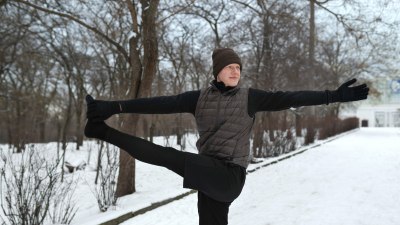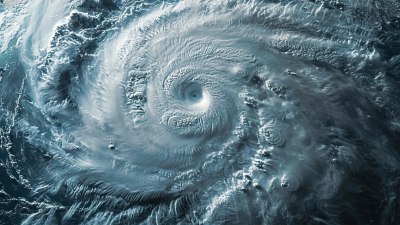How the Weather Affects Your Decision to Leave the Couch
Explore how different weather conditions influence your willingness to leave the couch and engage in outdoor activities.

The weather holds a remarkable influence over our daily lives, more so than we often realize. From the moment we wake up, an array of atmospheric conditions—from the gentle warmth of morning sunshine to the chilly whispers of a cold wind—can subtly dictate whether we feel energized and ready to take on the day or prefer to remain bundled up on our couch. In this article, we will explore the fascinating relationship between weather and human behavior, specifically focusing on what makes us decide to either venture outdoors or stay cozy inside.
The Psychological Impact of Weather
Our mood and motivation can be significantly shaped by the weather. Blue skies and sunlight are proven mood enhancers. Sunlight triggers the release of serotonin, a neurotransmitter associated with happiness and calmness. This biochemical effect can make the prospect of leaving the couch and engaging in outdoor activities feel more inviting on sunny days. Conversely, gloomy, rainy, or overcast weather often correlates with depressive moods and lethargy, potentially discouraging people from stepping outside.
The phenomenon known as Seasonal Affective Disorder (SAD) exemplifies this impact. People experiencing SAD exhibit depressive symptoms during months with shorter daylight and often prefer to remain indoors. Although the average person may not suffer from SAD, the reduction in energy and increased desire for indoor comfort during bleak weather is quite common.
Temperature and Physical Comfort
Temperature plays a crucial role in our willingness to leave the comfort of our couch. Moderate temperatures, typically ranging between 68°F (20°C) and 77°F (25°C), are ideal for outdoor activities without discomfort. In these conditions, leaving the couch to engage in walks, gardening, or sports feels natural and rewarding.
However, when temperatures dip significantly below or rise well above this range, the comfort level outside diminishes. Cold weather often necessitates bundling up with layers of clothing, which can be seen as inconvenient and may discourage spontaneous outdoor excursions. Alternatively, soaring heat levels, especially when coupled with high humidity, can be physically draining and risky, leading to heat exhaustion, thus encouraging people to stay indoors where air conditioning is available.
Rain, Wind, and Other Elements
Precipitation and wind conditions further influence our outdoor decisions. Rain can create a cozy atmosphere perfect for indoor relaxation but can also inhibit activities that people might otherwise enjoy. While some individuals revel in the fresh scent and serene ambiance of light rain, many see wet weather as a deterrent to leaving a warm indoor space.
Wind adds a layer of unpredictability. A gentle breeze is generally pleasant, enhancing comfort during outdoor activities. However, strong winds can make temperature feel colder and cause discomfort, making the prospect of stepping out less appealing. Wind noise and blowing debris also contribute to negative perceptions of being outdoors during blustery conditions.
Weather and Social Behavior
Social activities are particularly sensitive to weather changes. Sunny days tend to encourage group outings, picnics, and social sports, reinforcing social bonds through shared outdoor experiences. Friends and families are more inclined to plan events when the forecast is favorable.
In contrast, bad weather can limit social opportunities, as friends might postpone gatherings or opt for indoor, low-key activities. This retreat indoors often leads to more sedentary behavior and increased screen time, which can have cascading effects on physical and mental health.
Seasonal Variations and Lifestyle
Seasonal changes come hand in hand with shifts in weather and corresponding habits. During spring and summer, longer daylight hours and generally warmer temperatures foster increased outdoor activity. People naturally engage more in recreational sports, gardening, and sightseeing, extending their active periods throughout the day.
Autumn and winter, on the other hand, often bring colder temperatures, shorter days, and more precipitation, factors that encourage staying inside. This seasonal retreat into the home can lead to increased consumption of comfort foods, less movement, and a tendency toward introspection and rest. However, winter also offers unique opportunities for outdoor activities like skiing, snowboarding, and winter hiking for those prepared for the cold.
The Role of Weather Forecasts and Technology
Modern technology has made weather forecasts incredibly accessible and precise, influencing when and how we choose to step out. With smartphones, apps, and digital assistants, people check forecasts regularly to optimize their schedules and align activities with favorable conditions. This access can enhance preparedness, like dressing appropriately or postponing plans when heavy storms are predicted.
At the same time, frequent weather updates can increase weather-related anxiety for some people, leading to procrastination or unnecessary cancellations. Nonetheless, such tools mostly empower better decision-making and contribute positively to planning outdoor engagements.
Weather and Physical Activity Levels
Numerous studies have examined how weather directly correlates with physical activity levels. Unsurprisingly, more favorable weather conditions encourage higher activity rates. For example, individuals are more likely to exercise outdoors, walk, or bike on sunny days than on rainy or cold ones.
In colder climates, gym memberships tend to surge during winter months as people seek indoor alternatives to maintain fitness. Conversely, warmer climates often see year-round outdoor activity with slight dips during the hottest months of summer due to heat avoidance behavior.
Indoor Comfort and the Allure of the Couch
The modern living environment has become increasingly comfortable, often designed for relaxation and convenience. Plush couches, entertainment systems, and climate control make staying indoors highly attractive. When combined with less inviting weather, the couch emerges as a powerful magnet, offering warmth, rest, and entertainment.
Moreover, habitual behavior solidifies these comfort zones. If a person associates bad weather with indoor relaxation, this mental pattern strengthens, making the idea of leaving the couch seem more effortful or less rewarding, regardless of actual external conditions.
Strategies to Overcome Weather-Related Inertia
Understanding how weather affects your behavior is the first step to deliberately counteracting its negative influence. Planning ahead, like setting outdoor activity goals on favorable days, can create motivation and positive anticipation. Investing in appropriate clothing and gear for adverse weather can reduce physical discomfort and open new possibilities for being outdoors.
Adjusting indoor environments to complement outdoor activities is also beneficial. Encouraging natural light through windows or using light therapy lamps during dark days can alleviate mood dips. Creating an inviting environment for quick outdoor breaks, like a cozy porch or garden seating, provides manageable access to fresh air without full outdoor commitment.
The Influence of Personal Preferences and Culture
Personal attitudes toward weather vary greatly. Some people embrace rain and cold as invigorating, while others find these conditions unpleasant or even intolerable. Cultural factors further modulate these feelings; for instance, countries with harsh winters often develop traditions, sports, and lifestyles centered around cold-weather resilience and enjoyment.
This diversity highlights that weather's effect on couch decisions is not solely physiological or psychological but is also shaped by cultural upbringing, societal norms, and personal experiences.
Work and Weather Interaction
Employment type and work environment also affect how weather influences outdoor inclination. Office workers may have fixed schedules limiting their outdoor exposure regardless of weather, while freelance or outdoor workers adapt their activities based on conditions more dynamically.
Remote work, growing in prevalence, provides flexibility but also poses challenges; inclement weather might tempt individuals to stay inside continuously without breaks, thus reducing physical movement and increasing sedentary time.
Children, Weather, and Outdoor Play
Children’s outdoor play is heavily influenced by weather. Parents often decide based on forecasts whether children can safely and comfortably play outside. Good weather days are associated with increased physical, social, and cognitive benefits for kids through play and exploration.
Rain or cold can restrict these vital outdoor experiences, though creative indoor activities and protective clothing can mitigate these limitations. Encouraging adaptable outdoor attire can help children become more weather-resilient and less dependent on perfect conditions for play.
Psychological Approaches to Weather Challenges
Mindfulness and cognitive behavioral strategies help individuals recognize and challenge negative thoughts linked to adverse weather. For example, reframing a rainy day as an opportunity for alternative enjoyable activities rather than a barrier can increase overall satisfaction and activity levels.
Gradual exposure to less-than-ideal weather conditions, combined with reinforcing positive experiences, helps weaken the association between uncomfortable weather and indoor inactivity.
The Role of Urban Design and Green Spaces
Urban environments influence how weather impacts outdoor activity. Access to sheltered paths, parks, and weather-adapted public spaces encourages people to leave the couch despite unfavorable weather. Trees and greenery can provide shade against heat and shelter from wind and rain, facilitating greater outdoor use.
Weather-sensitive urban planning, such as covered walkways and heated bus stops, helps maintain active urban lifestyles year-round, reducing the weather’s deterrent effect on outdoor mobility.
Clothing and Gear Innovation
Technological advances in clothing and gear have greatly expanded the possibilities of comfortable outdoor activity regardless of weather. Breathable rain jackets, moisture-wicking layers, insulated boots, and accessories like umbrellas and heated clothing enable people to withstand harsher weather without sacrificing comfort, thus making it easier to leave the couch on poor weather days.
These innovations empower a more consistent active lifestyle by lowering the physical barriers weather creates.
How Weather Shapes Special Events and Holidays
Many holidays and festivals are intricately tied to specific weather patterns or seasons. For example, summer festivals commonly celebrate sunny warm weather, and winter holidays often include snow-related traditions. Weather quality deeply influences attendance and enjoyment at these events, reinforcing the pattern of associating weather with motivation to be active or stay inside.
Event planners closely monitor weather forecasts to schedule and prepare contingencies, underscoring the profound impact of weather on social and cultural life.
Weather, Nutrition, and Energy Levels
Weather also affects what and when we eat, which subsequently influences energy to leave the couch. Cold weather often triggers cravings for warm, hearty, and high-calorie foods to maintain body heat. This can lead to feeling sluggish or lethargic post-meal, discouraging physical activity.
On the other hand, warmer weather promotes lighter meals, such as salads and fruits, which can be more energizing and conducive to movement and outdoor activity.
Adapting Routines to Weather Patterns
Successful adaptation involves tailoring daily routines to accommodate weather variations. For example, planning morning walks during cooler hours in hot seasons or scheduling indoor workouts during adverse weather can help maintain consistent activity levels. Flexibility reduces the discouragement that weather-induced disruptions might cause.
Developing weather-aware habits ensures that the couch remains a resting place rather than a default destination when conditions are unfavorable.
Weather influences our choice to stay on the couch or venture out through a complex interplay of psychological, physical, social, and cultural factors. Sunlight improves mood and motivates activity; temperature and weather elements impact comfort and perceived effort; cultural norms and personal preferences contribute to varied responses; technology and urban design provide tools to surmount weather barriers; and strategic planning can mitigate negative effects.
By understanding these dynamics and actively preparing for weather variability, we can optimize our lifestyle choices, balancing rest and activity, and enjoy outdoor life more fully despite the whims of the weather.











